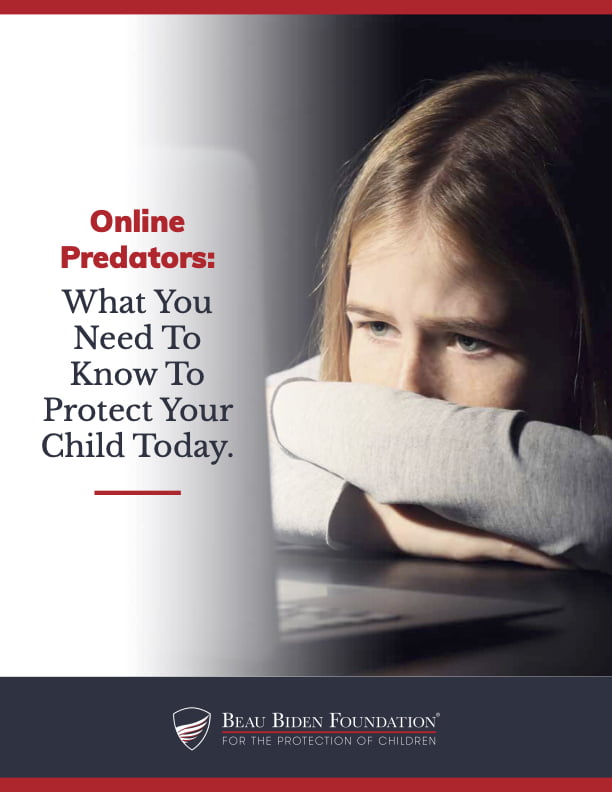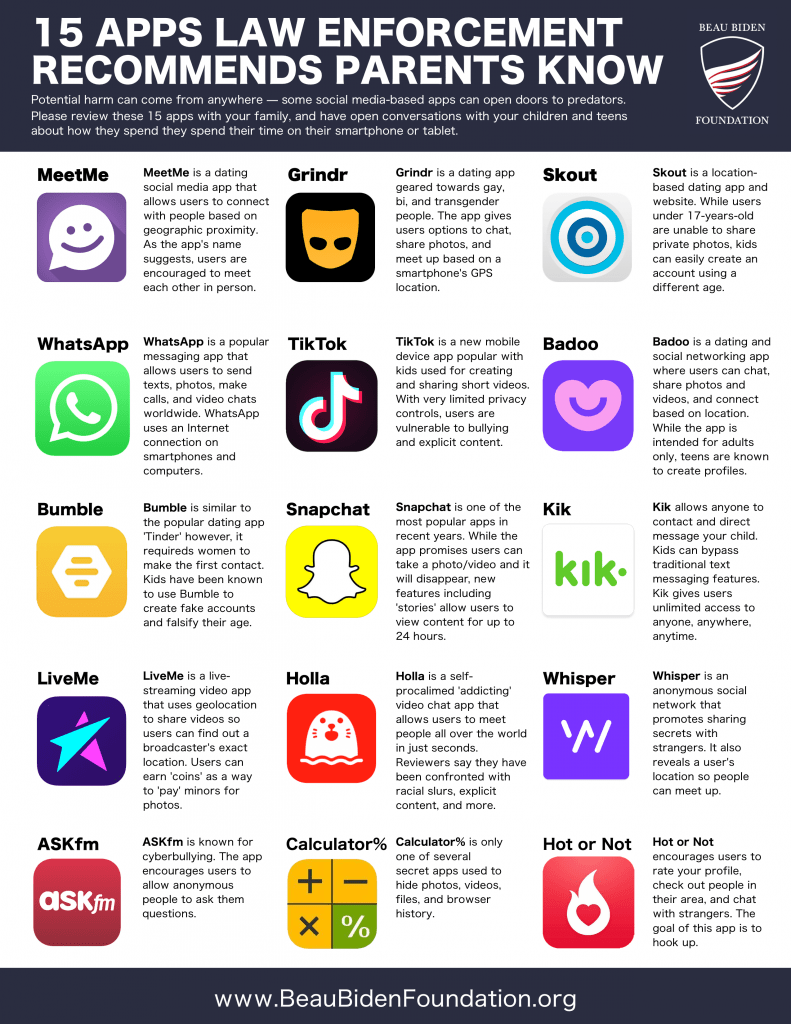Child abuse prevention experts across the globe have been very concerned about the safety and well-being of children during the current health crisis. The Beau Biden Foundation agrees. Aside from children potentially sheltering in a dangerous place – with an abusive or predatory relative – they are also spending more time on the Internet. Online, children are opening the doors to child predators. As summer begins, Internet usage among children and teens will continue to skyrocket – and child predators will continue to interact with children and teens at an alarming pace.
The Internet Crimes Against Children (ICAC) Task Force has already seen a 200% increase in reporting of children being groomed by child predators for sexual abuse and/or sexually exploited, since the beginning of the pandemic. Over this same time period, the National Center for Missing and Exploited Children (NCMEC) – who works closely with ICAC – has received a significant increase of alerts of Child Sexual Abuse Material (CSAM). Each week, NCMEC now receives up to 944,000 CSAM alerts. An astounding number, especially when compared to the 250,000-300,000 alerts received per week prior to COVID-19.
NCMEC also operates the CyberTipline – the nation’s centralized reporting system for the online exploitation of children. In April 2020, the CyberTipline received 4.2 million reports of CSAM – that’s up 2 million reports from March 2020, and up 3 million reports from April 2019.
What are Child Sexual Abuse Materials?
According to NCMEC:
“United States federal law defines child pornography as any visual depiction of sexually explicit conduct involving a minor (a person less than 18 years old). Outside of the legal system, NCMEC chooses to refer to these images as Child Sexual Abuse Material (CSAM) to most accurately reflect what is depicted – the sexual abuse and exploitation of children. Not only do these images and videos document victims’ exploitation and abuse, but when these files are shared across the internet, child victims suffer re-victimization each time the image of their sexual abuse is viewed… …these images and videos depict actual crimes being committed against children. The human element, children at risk, must always be considered when talking about this offense that is based in a high-tech world.”
A recent survey led by the Canadian Centre for Child Protection, states that 67% of CSAM survivors said, “the distribution of their images impacts them differently than the hands-on abuse they suffered because the distribution never ends, and the images are permanent.”
What can parents and caregivers do to help protect children and teens? The Beau Biden Foundation has some suggestions. First and foremost, awareness of the issues and understanding of how children are sought out and solicited online will help. Knowing this will inform your decisions about granting children access to particular apps and games. Reading blogs like this one, and download resources such as our Electronic Device Agreement will help ensure a child’s online safety.
The Beau Biden Foundation also encourages parents and caregivers to have continued and age-appropriate conversations with children about what apps they are using and games they are playing. It is critical for adults to fully understand the dangers that await within these apps and games so children can truly be shielded from online threats and child predators.
If you or someone you know has been victimized online, please make a report at NCMEC’s CyberTipline at https://report.cybertip.org.

Online Predators: What You Need To Know To Protect Your Child Today
Please click here to download our informative and FREE ebook.

